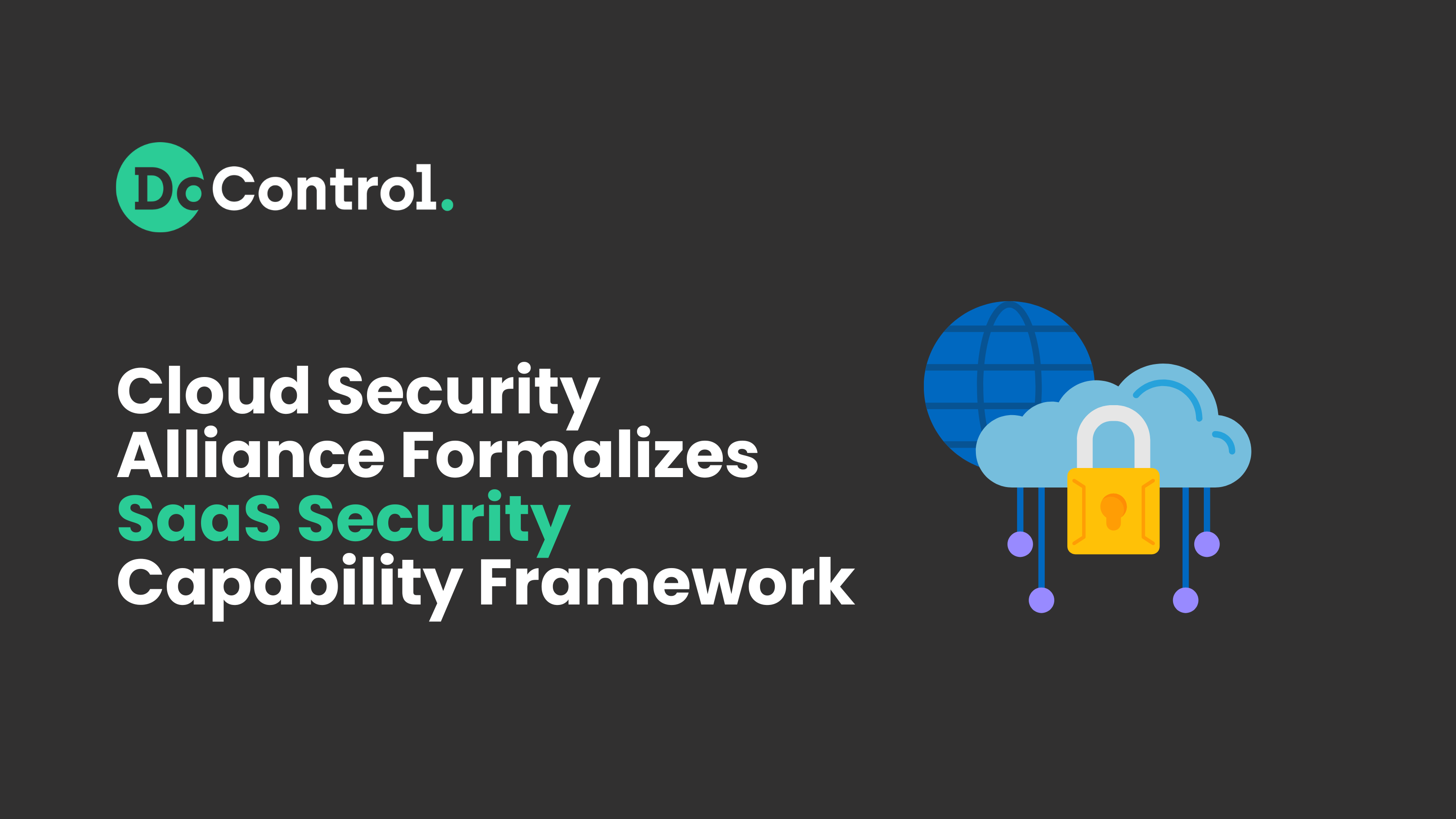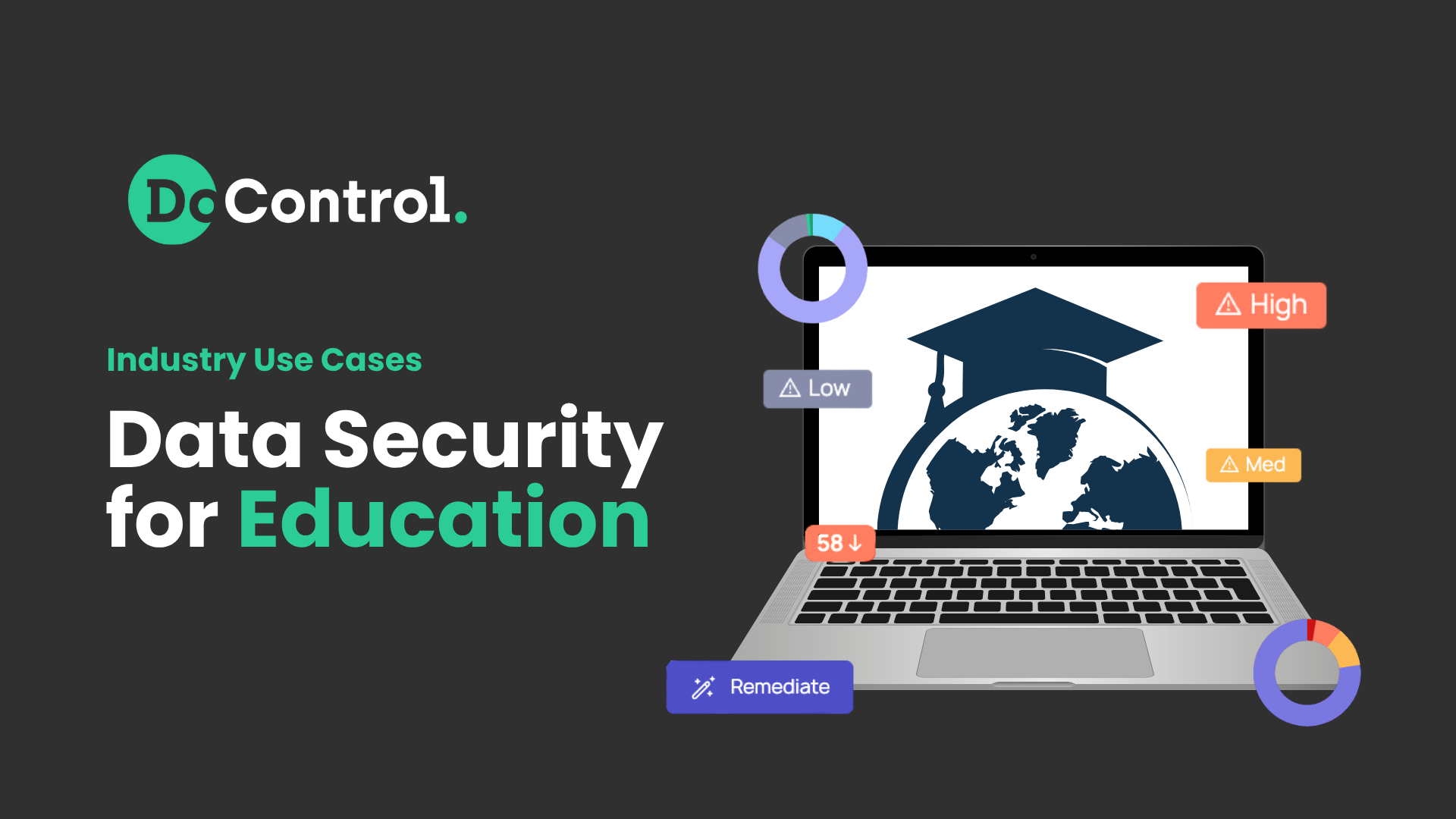
SaaS applications have transformed how organizations operate, enabling speed, collaboration, and scale. But too often, security has been an afterthought. The stakes are high - recent incidents impacting Scale AI, Coinbase, and Salesforce demonstrate that SaaS security gaps can lead to real-world breaches.
That’s why the Cloud Security Alliance (CSA), alongside the SaaS Working Group (which includes MongoDB and GuidePoint Security), has introduced the SaaS Security Capability Framework (SSCF). This marks a significant step forward in standardizing how we approach SaaS security.
The Problem: SaaS Security Lacks a Standard
Enterprises today manage hundreds of SaaS applications. Yet, there has never been a clear, defined standard for securing them. This creates challenges across three critical dimensions:
- Data: Where does it live, how is it accessed, and is it moving in or out of the company securely? This was at the core of the recent Scale AI incident.
- Configuration: Are applications set up to meet compliance requirements and minimize risk? This gap contributed to the recent Coinbase incident.
- Shadow Apps (Integrations): As applications connect with each other - and as GenAI and LLMs access and manipulate data - are those integrations secure, or do they introduce new risks? This was a key factor in the recent Salesforce-related integration breach.
The SSCF was designed to directly address these gaps so organizations have clear guidance on what best practices look like for implementing and leveraging SaaS.
The SaaS Security Capability Framework (SSCF)
The SSCF defines six key capability areas that organizations must prioritize, with some falling on the vendor to provide and others on the security team. We will dive into these further below as part of the Shared Responsibility Model.
1. Change Control and Configuration Management (CCM)
- Vendors must make security settings transparent, configurable, and documented with best practices.
- Examples: RBAC, entitlements, APIs feeding into SIEM.
2. Data Security and Privacy Lifecycle Management (DSP)
- Controls must be in place for how data is uploaded, downloaded, and shared across trusted and untrusted parties.
- Especially critical for platforms like Google Workspace, Slack, and Microsoft 365.
3. Identity and Access Management (IAM)
- Identify and manage all user and non-human identities.
- Enforce MFA, deprovisioning, password policies, and risky login detection.
4. Interoperability and Portability (IPY)
- Establish guardrails for integrations, approval workflows, and SaaS app verification.
- Prevent risky shadow IT and unauthorized data sharing.
5. Logging and Monitoring (LOG)
- Logs must include timestamps, IP addresses, user information, and more - delivered via push or pull methods.
6. Security Incident Management, E-Discovery, and Cloud Forensics (SEF)
- Assign clear ownership for incident response within each SaaS application.
The Shared Responsibility Model
One of the most valuable contributions of the SSCF is that it emphasizes the shared responsibility between SaaS vendors and security teams. Much like in cloud infrastructure security (AWS, GCP, Azure), SaaS providers deliver the platform, but customers are ultimately accountable for how they configure, monitor, and secure their environments.
SaaS Vendor Responsibilities
Vendors must provide the foundational security capabilities that make effective protection possible. This includes:
- Authentication & Identity Controls: Options for enabling MFA, SSO, and enforcing password resets.
- Logging & Monitoring: Comprehensive logs of user activity, integrations, file access, and system events.
- Role-Based Access & Permissions: Granular RBAC and entitlement models to enforce least privilege.
- Compliance-Ready Configurations: Security baselines that align with regulatory and industry standards.
Without these vendor-provided building blocks, customers would have no way to enforce controls or investigate incidents.
Security Team Responsibilities
Security teams, however, cannot assume that “turning on” SaaS automatically ensures safety. They must:
- Enable and enforce vendor controls such as MFA, password resets, and SSO.
- Continuously monitor logs for anomalies like risky file shares, suspicious integrations, or unusual login patterns.
- Audit configurations regularly to ensure compliance and minimize misconfigurations.
- Manage user lifecycle and deprovisioning, especially for contractors or departing employees.
- Assess integrations and shadow apps to verify they are approved and not introducing unnecessary risk.
Why This Matters
This shared model is where gaps often occur. Vendors may deliver the features, but without proper configuration, monitoring, and lifecycle management, organizations remain exposed. Breaches caused by orphaned accounts, insecure integrations, or excessive permissions are rarely the vendor’s fault - they’re breakdowns in the customer’s responsibility layer.
The SSCF reinforces this delineation: vendor responsibility stops at the capability, while organizational responsibility begins at the control. SaaS security posture management platforms exist to help security teams operationalize this model at scale, across hundreds of applications.
Why Vendors Can’t Solve This Alone
Even SaaS providers acknowledge they can’t secure everything for their customers. Enterprises face:
- Hundreds of applications, millions of events: Managing each app one by one is impossible.
- Different security models: Every SaaS vendor approaches security differently - logging formats, policies, and best practices vary widely. Manual management simply doesn’t scale.
- High-risk applications: Google Workspace, Slack, Salesforce, and Microsoft 365 contain the most sensitive enterprise data and therefore demand the highest priority.
Remember - SaaS apps are built to enable productivity, not security, so it’s critical to keep that in mind when deploying them.
This is where SaaS security vendors - specifically SaaS Security Posture Management (SSPM) platforms - play a critical role. They provide a scalable, standardized approach across all apps, filling the gaps left by vendors.
DoControl’s Best Practice Approach
At DoControl, we strongly support the SSCF - it’s critical that leaders in the industry educate the market on the need for a targeted and scalable SaaS Security program. With that said, we believe that data security must be the foundation of any SaaS security program. Every identity, every integration, every configuration ultimately ties back to the same core question: is your sensitive data safe and being used appropriately?
The SSCF defines six capability areas, and our approach aligns directly to each - ensuring enterprises can translate the framework into action:
- Identify and Focus on High-Risk Applications
SSCF Alignment: Change Control and Configuration Management (CCM)
- Security teams must prioritize “Tier 1” platforms like Google Workspace, Microsoft 365, Salesforce, and Slack - applications that house customer records, corporate IP, and sensitive collaboration data. By focusing on these first, organizations can maximize risk reduction where it matters most.
- Security teams must prioritize “Tier 1” platforms like Google Workspace, Microsoft 365, Salesforce, and Slack - applications that house customer records, corporate IP, and sensitive collaboration data. By focusing on these first, organizations can maximize risk reduction where it matters most.
- Prioritize Data Security
SSCF Alignment: Data Security and Privacy Lifecycle Management (DSP)
- Discover who has access to sensitive data and how it’s being shared.
- Detect oversharing, such as files exposed to personal accounts or open internet.
- Apply contextual, granular policies that allow secure external collaboration while blocking unauthorized access.
- Discover who has access to sensitive data and how it’s being shared.
This approach balances security with business productivity, ensuring protection without disruption.
- Monitor and Manage Integrations (Shadow Apps)
SSCF Alignment: Interoperability and Portability (IPY)
- Third-party integrations introduce some of the highest risks in SaaS environments - especially with the explosion of GenAI tools.
- Automatically discover, vets, and monitors these integrations to ensure:
- Only trusted applications connect to SaaS platforms.
- Shadow apps are flagged and blocked.
- Risky or over-permissioned integrations are remediated quickly.
- Only trusted applications connect to SaaS platforms.
- Third-party integrations introduce some of the highest risks in SaaS environments - especially with the explosion of GenAI tools.
- Control Identities
SSCF Alignment: Identity and Access Management (IAM)
- Get visibility and enforcement for internal, external, and non-human accounts.
- Detect risky login behaviors and excessive entitlements.
- Enforce clean joiner/mover/leaver processes to prevent account sprawl.
- Get visibility and enforcement for internal, external, and non-human accounts.
- Eliminate Misconfigurations
SSCF Alignment: Logging and Monitoring (LOG) + Security Incident Management (SEF)
- Continuously monitor SaaS configurations against compliance standards (SOC 2, ISO 27001, HIPAA, etc.).
- Automatically detect configuration drift as vendors release new features.
- Provide visibility into logs and events that support forensic investigation and incident response.
- Continuously monitor SaaS configurations against compliance standards (SOC 2, ISO 27001, HIPAA, etc.).
Building the Solution with DoControl
We’ve said it again and again: doing the above manually is nearly impossible. Just think about what it takes to remediate public assets in Google Workspace:
- 3 minutes to find the asset
- 1 minute to determine if it’s risky
- 1 minute to remediate
Now scale that across an average of 100K public assets per organization.
That’s 8,000+ hours of manual effort and $450K in costs - and that’s just one risk. Imagine the effort required for everything else.
Organizations need a comprehensive solution that deeply understands these applications in order to effectively secure them. While some vendors specialize narrowly in one area, DoControl provides a comprehensive platform that spans:
- SaaS DLP and Data Security – Control file exposure, enforce data governance, and prevent oversharing.
- Shadow App Detection – Identify and mitigate risky integrations before they become a problem.
- Misconfiguration Management – Continuously monitor SaaS posture against compliance standards.
- Identity Threat Detection and Response (ITDR) – Detect compromised accounts and risky identity behavior in real time.
By addressing these areas in unison, DoControl helps organizations meet SSCF requirements while building a resilient, scalable SaaS security program.
Final Thoughts
The Cloud Security Alliance’s SaaS Security Capability Framework is a watershed moment for the industry. It formalizes the standards security leaders have been asking for.
But as with cloud security, SaaS security cannot be solved by vendors alone. The scale, complexity, and business-critical nature of SaaS demand purpose-built solutions that go beyond what individual applications can offer.
At DoControl, we believe the path forward is clear:
- Adopt the SSCF as your baseline.
- Focus first on your most critical SaaS apps and data.
- Partner with a solution that deeply understands YOUR SaaS ecosystems and scales with your business.
DoControl was built for this challenge - helping organizations secure SaaS without slowing down productivity.



